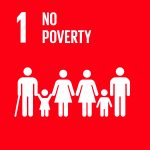Esta web utiliza cookies para que podamos ofrecerte la mejor experiencia de usuario posible. La información de las cookies se almacena en tu navegador y realiza funciones tales como reconocerte cuando vuelves a nuestra web o ayudar a nuestro equipo a comprender qué secciones de la web encuentras más interesantes y útiles.
Accelerating Education for the SDGs in Universities
Description
Institution
Organizations/areas of the university involved
Pathfinder Center at Biodesign Institute
Mary Lou Fulton Teachers College
School of Sustainability
School for the Future of Innovation in Society
Country
United States
This case study focuses on a university course called Sustainability Science for Teachers. The course is a required course for all pre-service K-8 educators in the Mary Lou Fulton Teachers College at Arizona State University. The course aims to prepare teachers to be educators for sustainability, who have knowledge, values, skills, and dispositions needed to help create a more just and sustainable future (Buckler & Creech, 2014; Nolet, 2016). It was designed by an interdisciplinary team of content experts in sustainability, pedagogy faculty with a background in education, doctoral students, a group of expert reviewers, as well as instructional designers and videographers. To teach sustainability concepts in a compelling and engaging manner, the course leverages the affordances of digital storytelling. It does so through the implementation of a series of video segments that encompass gripping case studies to teach various sustainability topics. The online videos consider global and national sustainability issues using a documentary-style narrative approach. After watching each week’s online videos, preservice teachers engage with various learning activities and in-class discussion. Weekly topics include poverty, energy resources, water, food systems, production, disposal, civic engagement, and curriculum integration. Preservice teachers engage with various learning activities and in-class discussions. Weekly topics include poverty, energy, water, food, production, disposal, civic engagement, and curriculum integration. Each week is motivated by one of four ways of thinking that drive all course materials and discussions; futures, values, systems, and strategic thinking (Warren, Archambault, & Foley, 2014).
The SDG framework provides a relevant context for preservice teachers’ learning about sustainability science. As instructors, we met to discuss how to integrate the SDGs throughout the course. We then made relevant revisions to the assignments and activities. During the course, we introduce the students to the SDGs in the first week of class through a video, ask them to discuss which are more attainable than others, and strategize about barriers that will need to be overcome in order to reach these ambitious goals. We have found that the SDGs resonate with students and give them a sense of broader purpose for seeing connections between sustainability and the curriculum they will teach. The international stories and global goals help students make connections to others around the world.
Results and impact measured or expected
Education plays a critical role in creating change. Students in schools and universities today will be the farmers, urban planners, engineers, and government leaders of tomorrow. Fostering sustainability literacy has a ripple effect: effectively educating our students for sustainability equips them with the tools and motivation they need to become change agents in their schools and communities. We have conducted several studies on pedagogies and outcomes and have used this research to inform course development. In a recent pre-post survey, students reported changes in their beliefs about the relevance of sustainability education, attitudes toward sustainable development, sustainable consumption practices, locus of control and EfS self-efficacy (Merritt, Hale, & Archambault, 2019).
Connection with the SDG framework
In another study, SDGs are mentioned explicitly each week of the course. For example, the second week focuses on SDG 1: End poverty in all its forms everywhere. Students read information from the SDG website and watch related videos. They are introduced to a variety of solutions that include both system and classroom level changes, and reflect on whether the poverty goals are attainable by 2030. Next, they evaluate different organizations that aim to reduce poverty and write a persuasive letter in favor of contributing to a related non-profit organization.
The cumulative project requires students to develop a five-day instructional unit that addresses a sustainability topic. Students are asked to write a rationale for why the topic is important to teach in K-8 classrooms, and to make a link back to one or more of the SDGs. This project helps our students move from learning about sustainability to becoming educators for sustainability.
Barriers and follow up
Being an educator in the world today requires a daunting set of skills and knowledge. Our course has been required for elementary education majors for six years and is currently ongoing today. However, competing demands for teachers’ knowledge and expertise in so many areas sparks conversations with colleagues and leaders about whether the course should be required, or just an elective for those who are interested. Another challenge we face is that the overall curriculum in the college is narrowing, with an overemphasis on mathematics and literacy, leaving less time and resources like our course which includes science and social studies. Our team of instructors uses the SDG framework as a rationale for this course and to help others see the value of educating for sustainability. We have achieved stakeholder (university leaders, colleagues, and students) buy-in through frequent discussions about curricula and goals for our students. Through digital stories, students make connections with others around the globe, motivating them to care about the SDGs.
Education 4 SDG funciona gracias a WordPress


